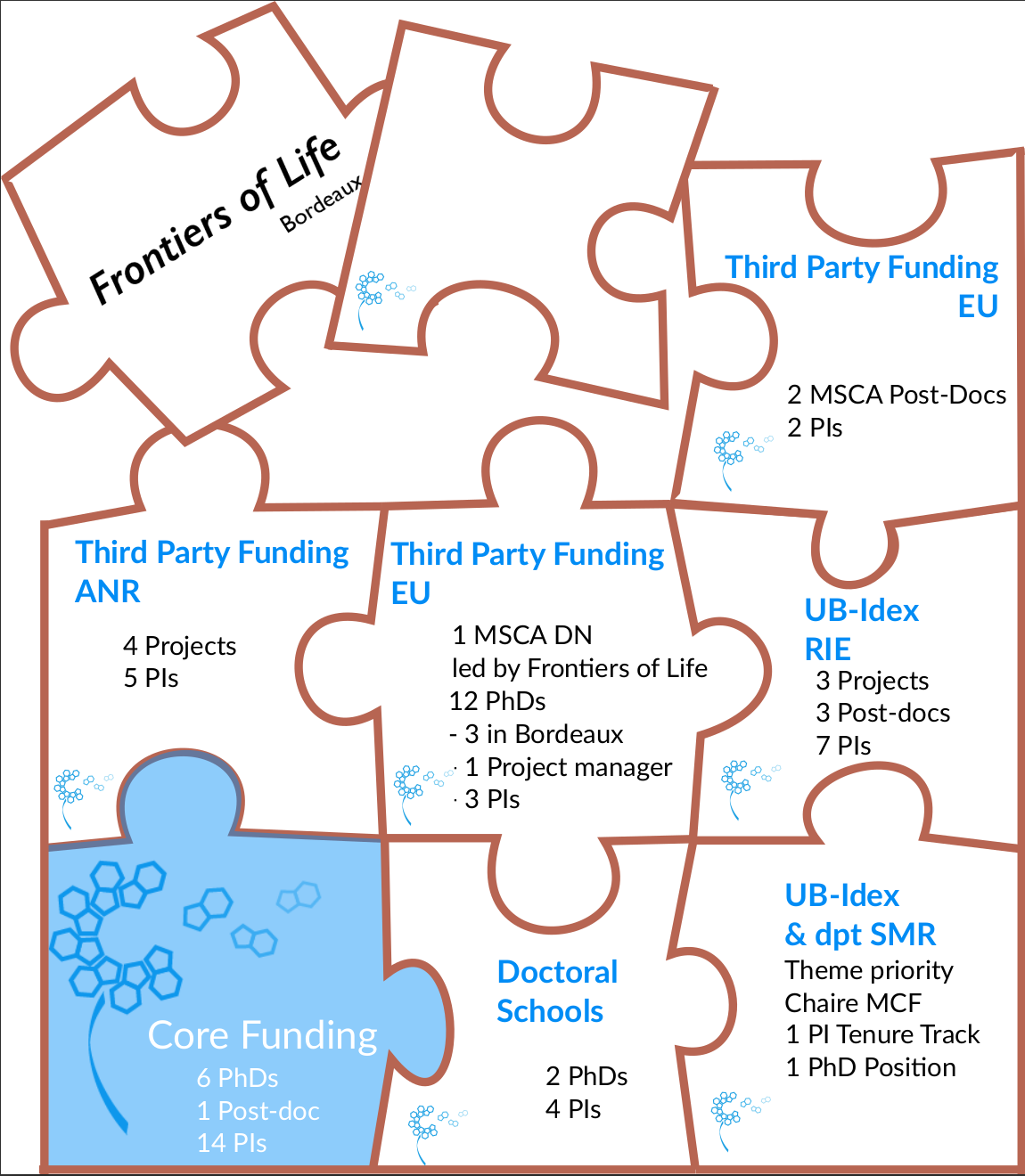Frontiers Of Life (RRI)
Dernière mise à jour :
‘Omnis cellula e cellula’ / Only cells make cells Rudolph Virchow – 1855
… really ?
Engineering Artificial cells
Reorganizing living systems from the molecular level to the level of cells, tissues and organs.
Project led by Jean-Christophe Baret, professor at the Paul Pascal Research Center (CRPP - CNRS and University of Bordeaux).
From the fight between creationist and evolutionist in the XIXth century, it is to be concluded that life forms can not spontaneously emerge from non-living matter: all living forms – as we know them – are the offspring of past living forms. And interestingly, even in the most advanced up-to-date demonstration of the creation of living minimal cells from the JCVI laboratory, the construction of a cell bearing an artificial genome requires a transplant in a micro-compartment obtained by overwriting the genetic information of a living cell. So in this context, to date, we still need a cell to make cells.
Yet – at one point in time – there has been a transition from non-living forms to living forms, meaning that a living cell has emerged or evolved from a non-living cell.
Can we go beyond ‘only cells make cells’?
We currently dissect cells in such a high-level of details that we will at one point be able to determine the minimal conditions – both in terms of principles and materials – for the emergence of life. And thereby construction living systems de novo will become both accessible and useful. We will put this question at the center of our research network with the fundamental question: What does it take to construct de novo a living cell?
How can we build ‘our cell’?
Nature does not display a cell but many forms of cells. Given the wide range of operations performed by living systems, at the industrial level for the transformation of raw matter, at the medical level in diseases or body repair and treatments, as well as for climate control and environment adaptation (CO2 fixation,…), a tailored assembly of new forms of living systems would be a groundbreaking step forward. Here we make a choice to view our cell of interest as a minimal cell that would be obtained from artificially constructed systems. This is already one small step further compared to the state of the art – the integration of minimal genome in a formerly living scaffold – but a huge step in terms of the control of the fundamental conditions required for the boot up of a cell from its genetic information. We plan to achieve this goal through an interdisciplinary network of researchers on the campus which has emerged over the past years. On the scientific side, our main strategy is to integrate experimental systems together, all bearing essential features of life and living systems. The ingredients that we propose to dissect, understand, assemble and integrate here in miniaturized systems therefore cover: Scaffolds and (micro-)compartments, Machineries to prevent decay, Chemical supply machineries, Energy supply for biochemical transformations, Genome, genetic information and their decoding machineries. We believe that besides the grand challenge of the construction of our artificial cell, our experimental approach (Fig.1) will provide new insights into the underlying challenge to define what ‘a cell’ really is and contribute to our understanding of biological, living and complex systems. The main objective of Frontiers of Life is tackled with 6 PhD projects that have started in 2022 (4) and in 2023 (2), combined to PhD projects funded by third party funding.

Main research department
Other research departments involved
- Sciences et technologies pour la santé (STS)
- Sciences de l’environnement
- Sciences biologiques et médicales (SBM)
- Sciences de l’ingénierie et du numérique (SIN)
- Bordeaux Neurocampus
- CHANGES - Sciences sociales des changements contemporains
Laboratories involved
CRPP, LOMA, LCPO, ISM, LOF, LP2N, ARNA, BIOTIS, CBMN, CRCTB, CRMSB, IECB, CIC, BFP, LBM, MFP, IBGC, BRIC, IINS, INCIA, BSE

